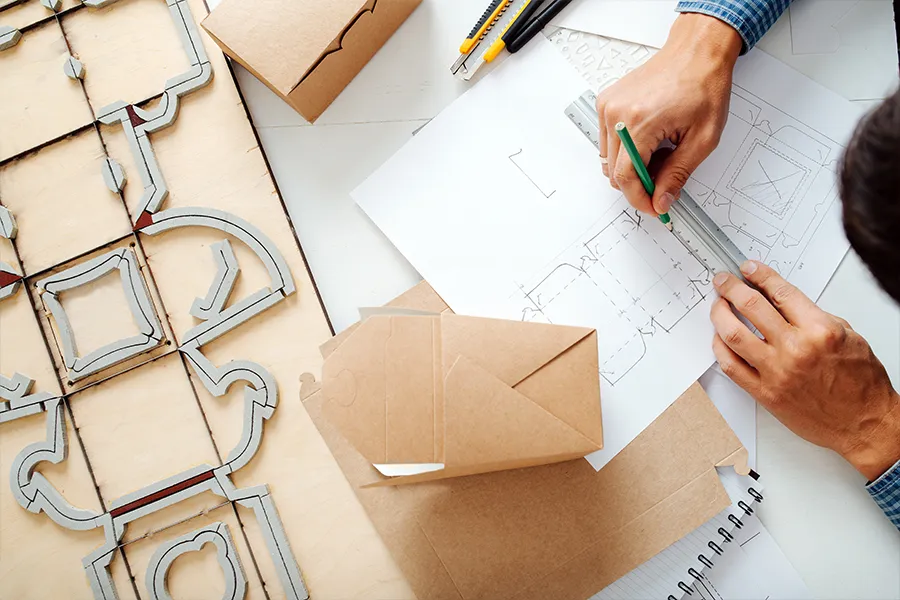Advantages of CAD integration include streamlined communication between design and production teams, reduced errors and revisions, faster time to market, improved cost control, and better data management. With CAD and ERP systems integrated, companies can achieve greater efficiency and accuracy in their operations, leading to increased productivity and profitability.
CAD, or computer-aided design, is a software that simplifies product design, commonly used in manufacturing projects. ERP, or enterprise resource planning, is a software system that manages various business activities such as project management, procurement, risk management, compliance, and other crucial operations.
By eliminating the repetitive task of data entry, designers can focus more on the actual designing process, leading to a better end result. Integrating both CAD and ERP systems can also alert you to available products and parts, making redesigning more cost-effective.
The good news is that this integration can also be achieved with CAD and ERP systems. CAD software allows designers and engineers to create and manipulate digital designs, while ERP software streamlines and automates business processes. When these two systems are integrated, they can provide many benefits, such as improved data accuracy, increased efficiency, and reduced lead times.
This article will explore the advantages of CAD and ERP systems individually and discuss the advantages of integrating these systems to improve business operations.
Advantages of CAD solution
Computer-aided design (CAD) is a powerful tool that has made far-reaching changes in the way products are designed and developed. It provides numerous advantages over traditional manual drafting, including:
- Faster Design Process: CAD software enables designers to create complex 2D and 3D models faster and more accurately than manual drafting. Changes can be made quickly, and the design can be viewed from any angle, making it easier to identify errors and adjust.
- Improved Accuracy: CAD systems allow for precise measurements and calculations, ensuring that the design is accurate to the required specifications. This reduces the need for rework and improves product quality.
- Better Visualization: With CAD software, designers can create realistic visualizations of their designs, making it easier to communicate their ideas to clients and stakeholders. This results in better collaboration and more accurate feedback.
- Increased Productivity: CAD software streamlines the design process, reducing the time and effort required to create designs. This increases productivity and enables designers to focus on more creative aspects of the design process.
Advantages of Integrating CAD and ERP systems
- Seamless Data Transfer: Integrating CAD and ERP systems enables seamless data transfer between the two systems, reducing errors and improving accuracy. This ensures that the design data is consistent across all departments, from design to production.
- Improved Collaboration: Integrating CAD and ERP systems improves collaboration between departments, allowing for more effective communication and coordination. This ensures that everyone is working towards the same goals and that there are no communication gaps or delays.
- Increased Efficiency: By integrating CAD and ERP systems, the entire product development process can be streamlined, reducing the time and effort required to bring a product to market. This results in increased efficiency and cost savings.
- Better Inventory Management: Integrating CAD and ERP systems enables better inventory management, ensuring that the right materials are available at the right time. This reduces the risk of production delays and ensures that products are delivered on time and within budget.
Summarized, the CAD and ERP systems provide numerous advantages that can help companies improve their product development process and increase efficiency.
By integrating these systems, companies can further improve their operations and stay competitive in today’s fast-paced business environment.
Conclusion
In conclusion, the use of technology has revolutionized the way we work, the integration of computer-aided-design (CAD) and enterprise resource planning (ERP) systems has become increasingly important. By integrating CAD with enterprise resource planning (ERP) systems, businesses can streamline their processes and improve communication between departments.
Integrating CAD and ERP systems can provide several benefits, such as faster production, fewer errors, cost savings, reuse of parts, and a more seamless process. When both systems are integrated, products can be updated in real-time without the need for re-entering data, reducing the chances of errors, and speeding up production time.
Additionally, the inventory of different parts can be streamlined, and any discrepancies can be addressed before they escalate into bigger issues. As technology continues to advance, it is crucial for companies to embrace these tools and stay competitive in an ever-evolving marketplace.
Stay up to date
Embracing technology and staying up to date with industry advancements is crucial for success, and Aicomp’s reputation and expertise makes their event “Aicomp Summit” a valuable resource for any packaging professional. Register at summit.aicomp.com to gain full access to informative videos and stay ahead of the curve.



